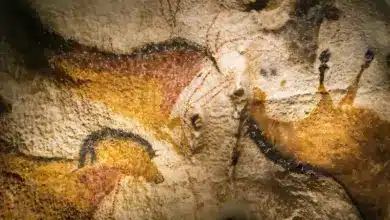Our Favorite ‘Lynx’
I’ve said it elsewhere on this site, but Mongabay.com is the place to go for information about rainforest wildlife and rainforest issues worldwide. The publisher, Rhett A. Butler, travels to many of the places he writes about, and he seems to have the complete respect of the rainforest scientific community. Nearly every day he publishes something that makes me better understand the world’s rainforests in all their complexity–and yet, Mongabay.com also has a children’s section that contains plenty of great stuff for my kids to read as well. —P.G.
Yellowstone National Park–the home of the grizzly bear, the gray wolf, the elk and the bison– occupies a special place in the heart of everyone who loves North American wildlife. I feel fortunate that Ralph Maughan, of Ralph Maughan’s Wildlife News, provides a web site where I can get frequent, accurate updates on wildlife issues in the Yellowstone area and the northern Rocky Mountains. —P.G.
ScienceDaily is just a fun and informative read–and not just about wildlife and the environment, but about everything scientific under the sun. The writing at ScienceDaily is as bright and entertaining as it is accurate. —P.G.
The Huffington Post’s “Green” section is also worth checking out every day. I usually disregard the “cute animal” stories–not really my cup of tea–and instead look for the interesting, offbeat and well-written environmental, wildlife and animal behavior articles that the HuffPo gathers from all over the world. The entire HuffPo is great, and the “Green” section is a particular bright spot. —P.G.
Favorite Blogs
For a day-brightener and a bit of fun, try Ugly Overload. There you’ll find photos of some of the planet’s ugliest–or at least strangest-looking–creatures, many of them wild, and all with faces that only a mother, or a monkey, could love.
A blog called Not Exactly Rocket Science, edited by a British science writer, does a great job of explaining some of the latest scientific discoveries in terms that can be understood by anyone. A lot of the focus tends to be on biology and animal behavior.
Living the Scientific Life [Scientist Interrupted]
This blog’s author is an evolutionary biologist, ornithologist and freelance writer who bills herself as “GrrlScientist.” She’s well traveled, writes about a variety of topics, including places in the world she’d like to go to do scientific research, and she has a passion for birds, particularly parrots. I’m going to be watching her blog to see if her wish to visit Antarctica to study penguins and other wildlife for a month comes true. I’m also going to get my 11-year-old daughter to start reading this blog: I can’t help but think that GrrlScientist makes a terrific scientific role model for any young person, male or female.
Greg Laden’s Blog
Greg Laden’s Blog (“Science as Culture, Culture as Science”) is extemely ecclectic and invariably interesting, zig-zagging from environmental musings to political ones in a heartbeat. Greg is a biological anthropologist who also runs a small ecotourism company. Oh–and he’s currently working on his memoirs about spending an extended period of time doing scientific research in the Congo. I may have to spring for the hardcover edition . . . .
Tetrapod Zoology
Many of the creatures UK vertebrate paleontologist Darren Naish writes about on his delightful Tetrapod Zoology site have been dead for thousands, even millions of years. Naish says, “I like dinosaurs very much, but they’re far from the only animals I find interesting.” In fact, he seems to find them all interesting, from dinos to bizarre pleistocene mammals that are no long with us to creatures we might see out our back windows if we got up to take a look. Most importantly, he writes about them all in an entertaining and understandable way.
The Conservation Report
This is a hard-core environmental blog by a scientist who has walked the walk, working as a professional conservationist in a number of capacities, including serving as a high-seas onboard fisheries observer and leading a scientific expedition in Magagascar. But The Conservation Report also contains many thought-provoking ecclectic elements, including some political ones. And that’s good, because in the real world, you can’t get much meaningful environmental work done without tugging at a few political levers–or maybe even suing an environmental despoiler. Conservation Report author Buck Denton is currently back in law school, with plans to become an environmental attorney . . . —Paul Guernsey
Green Answers.com is a new question-and-answer website that shows a lot of potential. If you’ve got environmental questions—or think you can answer some knowledgeably—give this site a visit.
Blogcatalog.com Has a number of wildlife/conservation blogs you can browse.
Top Wildlife/Environmental Non-Profit Organizations
Not only is the World Wildlife Fund one of the premier international wildlife conservation organizations, but they run a great-looking web site on which they frequently publish news about the projects the WWF has undertaken. —P.G.
Though not strictly a wildlife organization, The Nature Conservancy does as much as any group to help wildlife. After all, the main key to wildlife protection is habitat preservation, and that’s what TNC does–and they do it all over the world. This was the first environmental group I ever gave a donation to . . . way back when I was around 13 years old. Also, have a look at The Conservancy’s blog, Cool Green Science. —P.G.
Among the intense pressures facing the world’s vanishing wildlife, the illegal hunting and taking of wild creatures ranks right behind habitat loss in seriousness. The group Traffic does a great job of both documenting the illegal killing, capture and trading of wildlife, and keeping governments’ and law enforcement organizations’ feet to the fire on these issues. —P.G.
The Endangered Species Coalition is a feisty little USA-focused group that bills itself as “the guardian of the Endangered Species Act.” Not only does the Coalition draw the attention of other groups and individuals to legislative issues involving the ESA, but they also push for the ESA listing of vulnerable plants and animals that have not gotten the attention they deserve from the government. —P.G.
Governmental and Regulatory Web Sites
The US Fish & Wildlife Service. Pretty much a must for anyone who runs a site like All About Wildlife.com. They’ve got all the ESA listings, as well as plenty of information about all the listed species. —P.G.
The IUCN Red Red List of Threatened Species. International, listing thousands of species, with detailed status and habitat information, along with maps. Another must-have for All About Wildlife.com. Site navigation is not as intuitive as I’d like–but that’s a small, small drawback. —P.G.
Scientific Web Sites
Not everybody’s cup of tea, but for the adventurous and the scientific minded, there’s PLoSone.org. PLoSone bills itself as “An interactive open-access journal for the communication of all peer-reviewed scientific and medical research,” and it’s one of the first (online) places scientific papers are published after the peer-review process is completed. Some of these papers, in addition to containing fascinating information on ecology, wildlife and animal behavior, are not badly written . . . Scroll down to the “Contents” listings and explore the Ecology and Evolutionary Biology sections; that’s where I do most of my browsing. —P.G.
Green Living
Treehugger.com is not strictly, or even primarily a wildlife site. But it is important nonetheless because it contains all sorts of useful advice and tips for reducing the load that each one of us places on the planet and its environment. Plus, it’s fun to read. —P.G.
Travel
I used to edit a fly fishing magazine, a job that required me to travel all over the world to various places where the fishing was rumored to be good. I’d spend a few days fishing there, and get the scoop. One of the largest side benefits was that the places I was fishing were usually great spots for observing, and learning about, wildlife. I still think combining fishing and wildlife travel is one of the finest ways to go about things. My favorite fly fishing website is MidCurrent. It’s full of great travel ideas we well as inspirational fly-fishing videos and well-written fishing articles. —P.G.

